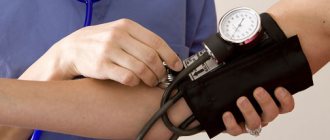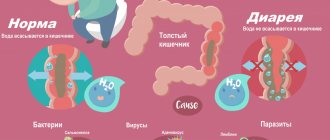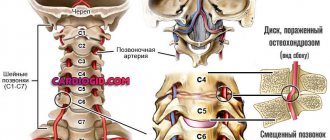20.12.2018
Last modified: January 31, 2021 at 09:10 pm
Mustard plasters are a common, affordable remedy that helps with colds, neuralgia, myositis, and other diseases. One of the indications for their use is arterial hypertension, or increased blood pressure.
Mustard plasters for hypertension can quickly normalize the patient’s condition and relieve the symptoms of the pathology, but require caution and proper use.
What is the beneficial effect of mustard plasters?
Effects of mustard plasters on high blood pressure:
- relax vascular walls;
- activate blood circulation;
- dilate capillaries.
At a temperature of 45°, mustard plaster begins to release essential oils that have a healing effect. In addition to oils, mustard plaster evaporates phytoncides, which prevent the development of various pathogenic microorganisms.
Mustard plasters are not used:
- during pregnancy;
- elevated temperature;
- with inflammation of the respiratory tract;
- for skin diseases;
- individual intolerance.
Mustard plasters will help with high blood pressure.
Mustard plasters with high blood pressure will be useful only at the first stage of the disease.
How do mustard plasters affect blood pressure?
With the help of heating and penetration of active elements, the effect of mustard plaster at high pressure is as follows:
- blood circulation improves;
- immunity is strengthened;
- the body's protective actions are increased;
- vitality is strengthened;
- the degree of excitability is restored.
For hypertensive pathology accompanied by headaches, it is necessary to place mustard plaster on the back of the head and on the calves of the legs. This action will relieve spasm from the vascular walls of the brain. The autonomic system is activated, as a result of which blood pressure normalizes.
Features of mustard plasters
When the application is applied to the surface of the skin, the blood vessels dilate, which improves blood circulation and the body's immune properties. The appearance of heat stimulates the autonomic system, tension increases, and the risk of negative consequences of high blood pressure decreases. Increased release of phytoncides blocks the proliferation of viruses and infections.
To lower blood pressure, mustard is used in the following places:
- back of the head;
- shoulder strap;
- caviar;
- On the neck, outside the area of the lymph nodes.
The easiest way is to apply it to the calf area. This method is often called "mustard shoeing." It is recommended to wear a warm wool sock to get the best effect over the applied patch. This can be done to stabilize blood pressure readings, but during peak surges, urgent medical attention is needed.
Mustards are used as an addition to conservative treatment and alleviate the symptoms of the disease, but are not a complete replacement for pharmacotherapy.
Correct use of mustard plasters
Mustard plasters can only reduce blood pressure if they are used correctly. To do this you need to follow the rules:
- Before use, mustard plasters must be softened with water at a temperature of no more than 37°.
It is important to know how mustard plasters are used, where, when and how to place them
- It is not recommended to wet the mustard patch with boiling water, as the product may lose its medicinal properties.
- Mustard plaster is applied to a specific area of the body, covered with a warm cloth and pressed.
- The mustard plaster is placed with the smeared side towards the back of the head.
- After removing the mustard patch, it is advisable to lubricate the skin with Vaseline or cream.
- After the procedure, it is prohibited to treat the skin with alcohol.
- It is strictly not recommended to use mustard plasters for longer than 20 minutes.
- Mustard plaster should be used no more than twice a day.
- There should be no cosmetics or perfumes on the skin to avoid causing a burn.
- In case of severe burning and tingling, the product must be removed so as not to provoke pathological processes.
- Before using mustard plaster, you should undergo a short test for allergic reactions. To do this, you need to apply a little dry homemade mustard to your wrist and monitor the skin reaction. If an allergic reaction is detected, you should choose another remedy for high blood pressure.
- To avoid an addictive effect, it is not advisable to use the patch for more than 5 days in a row.
Therapeutic effects of mustard plasters on the body
The essential oil that is part of the spice, when in contact with the skin, causes irritation of epidermal cells, gives a warming (feeling of warmth) and analgesic effect.
As a result of local inflammation, reflex reactions begin in the body - body temperature rises slightly, pain subsides, blood flow improves, tissues and blood vessels dilate. Poultices and compresses based on hot spices have been used since ancient times to alleviate many diseases. Among them:
- Upper respiratory tract lesions (colds, rhinitis, cough).
- Lung diseases (bronchitis, pneumonia).
- Sinusitis.
- Muscle inflammation.
- Angina pectoris.
- Radiculitis.
- Osteochondrosis.
- High blood pressure, including hypertension and hypertensive crisis.
- Local pain.
- Crick.
- Neuralgia (nerve damage with painful attacks).
For hypertension, mustard plasters began to be used quite recently, and they are a kind of distracting remedy that, in addition to the warming effect, helps:
- dilate blood vessels and make them more elastic;
- improve blood circulation;
- normalize blood pressure.
The essential oils and phytoncides contained in mustard powder have numerous beneficial properties, making it possible to reduce headaches in hypertensive patients, as well as stop the proliferation of viruses and bacteria in the body.
Contraindications to the procedure
Like any other medicinal product, mustard plasters also have their contraindications. They are strictly prohibited from being used in the following situations:
- Increased body temperature.
- Tendency to allergies to the components of a warm compress.
- Pulmonary hemorrhage.
- Exhaustion.
- Bronchial asthma.
- Violation of the integrity of the skin - rash, ulcers, wounds.
- Skin diseases - psoriasis, atopic dermatitis, neurodermatitis, etc.
- Pregnancy, regardless of trimester.
- Presence of cancerous tumors.
- Phlebeurysm.
- Tuberculosis.
- Cramps.
- Reduced skin sensitivity.
If these contraindications exist, it is prohibited to use mustard plasters to reduce high blood pressure. In other cases, they are an excellent adjuvant treatment and help avoid stroke.
Possible side effects
If the rules of use are not followed and the quality of the warm compress is poor, they can cause the following side effects:
- allergy;
- skin itching;
- nausea;
- dizziness;
- difficulty breathing;
- redness of the area where the warm compress was placed;
- burn;
- severe burning at the place where the compress was applied.
In addition, mustard plasters can slightly increase body temperature. All these complications should not last long.
If the skin turns red during the procedure, then this is normal, that is, after some time it should take on its normal appearance. If the irritation lasts more than 3 hours, then in the future it is worth abandoning this method of treatment in favor of safer means.
Back of the head or calf muscles
In case of a sharp rise in pressure, the first and simplest help will be mustard plasters. They are quite simple to use, and they bring maximum effect.
All you need to do is apply it to a certain place.
Where should you put mustard plasters for high blood pressure? Common locations for mustard plaster are:
- occipital part;
- calf muscles;
- lumbar area;
- shoulder area.
The most effective area of influence of the mustard patch is the occipital part and calf muscles:
- When attaching mustard plaster to the neck under high pressure, it is not recommended to wet it in hot water, as this can cause a burn and the essential oils will lose their healing effect. The mustard plaster should be kept on the back of the head for 10 minutes. During the procedure, blood flows out from the vascular walls of the brain, the pressure decreases and normalizes.
- Mustard plaster for high blood pressure is also applied to the calves, but the effect will be less effective, unlike mustard plaster on the occipital region. For the calf muscles, it is better to take warm baths with the addition of 1 tbsp. spoons of mustard, which is placed in a linen bag and immersed in water. The procedure lasts about 20 minutes.
What precautions should you take?
Place the mustard plaster on the back of the head or neck and shoulders correctly.
In order not to harm your health, you should adhere to the following precautions:
- When a hypertensive patient has an inflammatory disease accompanied by a high temperature, mustard plasters cannot be used.
- In case of severe burning or pain, the mustard patch must be removed.
- In case of burned skin, wash the affected area with boiled water and cover with a cotton cloth.
- It is forbidden to treat the damaged area with alcohol; it is preferable to use Vaseline.
- Mustard plasters should not be placed on damaged areas of the body, so as not to provoke complications on the skin.
Release form and composition
Mustard plasters are paper bags containing powder - ground black or Sarepta type mustard seeds. They are sold in pharmacies in two forms - classic and packaged, which have minor differences in composition and mechanism of action:
| Classic | Thin sheets of paper coated on one side with a layer of mustard powder and a substance to hold it in place |
| Bagged | The powder is placed in bags made of special paper or material that does not get wet when in contact with water. Sometimes the composition of the medicinal mixture includes other components - essential oils (for example, eucalyptus), which enhance the effect of the drug |
Most often, mustard plasters are used for colds accompanied by a runny nose, dry cough, congestion in the lungs, inflammatory processes, and disorders of the nervous system.
They are usually recommended for use in combination with other medications in the initial stages of diseases. They eliminate inflammation, increase the body's defenses, and speed up the healing process. But the products are used not only in medicine, but also in cosmetology to combat excess weight, cellulite, hair loss, and other problems.
How to choose effective mustard plasters?
To achieve a positive result and make the right choice in the search for mustard plasters, you must consider that:
- mustard plaster must not be expired;
- When immersed in water, the patch should smell exclusively of the characteristic mustard oil. Other odors: acid, rotting - excluded;
- if the powder spills out of the plaster, or if the mustard plaster is not attached tightly to the paper, the product will be ineffective;
- mustard powder should not be light in color, otherwise it will not have a healing effect.
You should be aware that redness and burning may occur at the location of mustard plasters.
Selection of mustard plasters
The traditional means now are paper sheets with a layer of mustard inside.
The effectiveness of treatment largely depends on the quality of the warming drug, so when purchasing, you should pay attention to several aspects.
Highlights include:
- layer stability - paper layers must be tightly closed, preventing the contents from spilling out;
- smell - it should not emit a sour or musty smell, but a specific aroma appears after dipping high-quality sheets into water;
- Expiration date - when purchasing, pay attention to the date of manufacture;
- color - good quality powder should have a bright, uniform color.
Is it possible to make mustard plasters with your own hands?
You can make mustard plasters for pressure yourself. The effectiveness of a home remedy will be greater than pharmacy options. To make mustard plasters you will need:
- dry mustard;
- flour;
- warm water;
- cotton or any natural fabric.
Take 1 tablespoon of each ingredient and mix thoroughly. Place the mixture on a cloth and apply to the area, cover with a warm towel on top. These mustard plasters should be kept for no longer than 5 minutes, as they are much stronger than pharmaceutical ones. Homemade mustard plasters should be used no more than once a day. The course of treatment should be no longer than 5 days.
Is it possible to make mustard plasters at home?
You will need thin paper or natural fabric, mustard powder, flour, water. The powder must be mixed with flour in equal proportions, diluted with water to form a paste. Apply the resulting product onto pieces of paper or fabric and fold them into an envelope. The rules for using homemade mustard plasters are no different from using store-bought ones.
Mustard plasters are a common folk remedy that is often used to treat hypertension. If you believe the reviews, when used correctly they quickly relieve the symptoms of hypertension and rarely cause side effects.
What are the possible side effects?
In addition to all the beneficial properties, mustard plasters for pressure have a number of side effects that must be taken into account before use.
Side effects of mustard plasters:
- skin irritation and redness;
- allergic reactions;
- severe burning sensation;
- temperature increase;
- the occurrence of rashes.
If the skin turns red immediately, then this is considered normal. If irritation or itching lasts more than 3 hours, you should abandon this method of lowering pressure.
Contraindications
Despite the natural composition of mustard and its effectiveness in treating many diseases, this remedy should be used with caution. Restrictions on the possibility of use are dictated by the specific condition of the person, therefore the application should not be used during pregnancy and breastfeeding.
Contraindications to the use of mustard are:
- increased body temperature above 37.5 ° C;
- Presence of damage or injury to the skin;
- asthma;
- malignant tumors.
Mustard tablets should not be used if you are personally intolerant to the components of the product, but should be used with caution if you are prone to allergic reactions.
Alternative methods to reduce blood pressure
When mustard plasters are not suitable in individual cases, you can use alternative methods of lowering blood pressure with a similar effect on blood vessels, for example:
- Soak the wipes in apple cider vinegar diluted with water and apply to the feet for 25 minutes.
- Mix 1 tsp. "Corvalol", tinctures of motherwort, hawthorn and valerian. Dilute one tbsp with water. spoon of tincture. Drink daily if you have high blood pressure.
- It is recommended to pour cold water over the neck area, face, or apply a cold compress to the back of the head and forehead. Take cool water baths for your feet.
Calendula is used for hypertension and many other diseases
- It is recommended to drink calendula alcohol infusion daily, 15 drops.
- Drink a mixture of cranberry, carrot and beet juice with the addition of one tsp. honey and vodka. Use 1 tbsp. l. daily three times a day.
- For high blood pressure, it is recommended to massage the chest, back of the head and temporal area for 20 minutes.
- If there is a sudden increase in pressure, you should lie on your stomach, face into the pillow. Place a couple of pieces of ice on your neck.
- Breathing exercises are recommended. You should hold your breath for 30 seconds, then exhale slowly. Perform the procedure for 5 minutes.
In addition to home remedies, effective medications are recommended: “Capoten”, “Enap”, “Noliprel”.
Mustard plasters are considered a universal method that effectively copes with high blood pressure, especially at the initial stage of the development of hypertension. This is an auxiliary remedy that does not replace the main course of treatment. Therefore, after stopping the attack, you must consult a doctor.
Burn after mustard plaster
If the safety instructions are not followed, they can cause serious burns. Skin lesions are indicated by tissue swelling, blisters, hemorrhages, and severe pain. You need to provide first aid and consult a doctor immediately. Remove any remaining mustard from the skin and use the following to reduce discomfort:
- You can use hydrogen peroxide or chlorhexidine as an antiseptic;
- in case of intense pain, take an analgesic antihistamine;
- to speed up tissue healing, lubricate the area with ointments and gels with a regenerating effect (Solcoseryl, Panthenol).
Among the folk remedies for burns, infusions of calendula, chamomile, sage, aloe juice, cabbage compresses, and raw potatoes are allowed. Do not lubricate the burned area with products based on fat and oils - they block the access of oxygen to the tissues and contribute to the development of suppuration.
For reference! Doctors have different opinions regarding the treatment of hypertension with mustard plasters. Some experts talk about their effectiveness, while others claim that the product can cause serious harm to the body.










